The investigation team of Enab Baladi
Epidemics are gradually reappearing in Syria again as part of a reality that has started to impose itself in zones that are not controlled by the Syrian regime, especially in the northern and eastern regions which have witnessed a series of fights amid the total absence of local and civil authorities. This confirms how the health situation deteriorated under the siege and the battles on the one hand and the favorable conditions for the spread of epidemics and diseases on the other.
The international health organizations are observing the spread of these epidemics through monthly reports that warn against and express their anxiety regarding the catastrophic consequences that threaten the children of the region as a whole, especially with the increasing number of complicated cases of displacement and the camps that have spread along the border with neighboring countries.
In the past few days, Deir ez-Zor has been at the forefront of the debate. The Global Polio Eradication Initiative announced that three cases of the disease have re-emerged in the province; years after Syria declared it was “free” from the disease.
Going back to the history of wars and crises, the return of epidemics is a condition that has proved its presence in specific environments, due to several reasons, notably poor hygiene and the spread of ruins, rubble and cadavers, as well as the difficulty of movement to and from specialized health facilities.
Enab Baladi is trying to consider the map of the spread of epidemics in Syria, especially in areas that provide a fertile ground for its spread and presence. The team organized a special visit to doctors and responsible health authorities in order to determine the causes of the spread of diseases, provide information on how to avoid them, and what citizens should do if they discover that they are infected.
Poliomyelitis is Rampant in Deir ez-Zor
Although the Syrian regime announced in April 2015 that Syria was free from poliomyelitis, on 11 June 2017, the World Health Organization (WHO) reported three cases of severe weak muscle paralysis in Deir ez-Zor Governorate and in the Al-Mayadeen area in particular.
The last confirmed case of poliomyelitis in Syria was in 1999, and Syria remained disease-free until October 2013, when cases of “wild” poliovirus were confirmed in Deir ez-Zor and Aleppo.
The number of cases reported until June 6 was 58, besides two cases where sample analysis proved they were infected with poliovirus type 2, as well as 11 other cases whose sample analysis yielded negative results.
After “polio” spread was confirmed (type 2), the NHO is planning to intervene, including planning for additional vaccination campaigns, using the monovalent oral polio vaccine (type 2), according to the internationally accredited “Outbreak Response” protocols. (Outbreak means the spread of infectious disease).
History of Contagion in Deir ez – Zor
Dr. Imad al-Mustafa, resident of Deir ez-Zor, the head of the NAS organization and the former director of the health office at the local council of Deir ez-Zor, told Enab Baladi that the first time the disease appeared was in 2013 in the town of Subikhan and the surrounding villages. The World Health Organization (WHO) and UNICEF sent a medical team then who concluded that there were 12 cases of infection after the analysis of samples in Turkey.
He explained that vaccination campaigns continued in the city until “ISIS” entered it to allow after that the return of campaigns to the city but within permanent health centers and not mobile ones, and excluded the city of Al- Bukamal of the campaigns because it is part of the “Euphrates Governorate” as ISIS calls parts of Iraq and Syria. The campaigns completely stopped in early 2016.
Poliomyelitis is a viral infection affecting children, and it affects the nerves, especially those of the lower extremities, causing full or partial paralysis. It can even cause complete paralysis within hours.
Since the late 1980s, poliomyelitis infections have globally declined to more than 99 % thanks to vaccination, but they still exist in countries such as Afghanistan, Pakistan, India and Nigeria.
In his follow-up of the health situation in Deir ez-Zor Governorate, Dr. Mustafa pointed out that cases of viral disease appeared in February 2017 in the town of Subikhan and the nearby villages, in addition to the area of Al- Boulil, Bokros and the areas of al Sour and al Kasrah, where 26 cases of suspected infection through clinical diagnosis were registered and then later on confirmed via laboratory analysis.
He pointed out that “with every case of apparent polio infection there are 200 hidden infections (…) unfortunately every two or three days we register a new infection and the number of suspected cases in Deir ez-Zor as a whole is almost 35 cases.”
“ISIS” did realize the danger, according to Mustafa, so it launched a vaccination campaign in the last few weeks, but it was futile, because they used vaccines of third degree which have been stored since July 2016 and which “do more harm than good.”
No Cure … But How to Check its Spread?
The disease is caused by the polio virus or (poliovirus), a highly contagious virus transmitted from person to person through a variety of ways, including direct contact between an infected and a healthy person, mucus and rheum from the mouth and nose, and contaminated feces, as well as through food and water contaminated with the virus. The virus enters the body through the mouth or nose and then multiplies in the throat and intestines to be absorbed into the body and transmitted through blood to the rest of its parts.
Dr. Akram Khulani, a specialist in family medicine, said: “There is no cure for the disease, but some measures are recommended to reduce the associated complications. The infected person has to stay in bed, take antibiotics for secondary infections and pain killers. In addition, he has to undergo physical therapy sessions in order to prevent deformity and loss of muscle function.”
According to Dr. Khulani, vaccination is the main weapon for the prevention of disease, “by giving a person inactive viruses that are not harmful. It is also safe for those with a weak immune system, but it is enough to stimulate the immune system to form antibodies that recognize, attack and eliminate the virus.”
He explained that “the vaccine is given in five doses at the age of two months, four months, six months, a year and a half and the last dose between 4 and 6 years when the child enters school,” noting that “the effectiveness of the vaccine is 90 % after two doses, and 99 % after three doses.”
The Health Care System is a Victim of Six Years of War
In March 2017, the World Health Organization (WHO) published a report that reflects the deterioration of the health sector in general in Syria. Six years have passed since the outbreak of the revolution and the war has been going on since then. During this period, the country has been unable to restore the status quo.
Access to functioning health facilities has become a challenge for most people, no matter where they live, and despite the current ceasefire, the World Health Organization (WHO) and its partners have not yet been able to regularly reach local communities in hard-to-reach areas.
More than two-thirds of the world’s 2016 health care facilities attacks occurred in Syria, according to the WHO.
Dr. Peter Salameh, Executive Director of the WHO Health Emergency Program, said that “basic health needs in Syria are not yet met, hospitals and health facilities have run out of resources to support health sector personnel, and the health system has been exhausted.”
“Obstacles to access health-care services continue to exist, including the security risks facing health care personnel and the availability of medicines, supplies and equipment,” said Salameh.
Diseases are Spread in Raqqa, a City “Isolated from the World”
The health situation of the city of Raqqa is not different from that of Deir ez-Zor. However, the statistics of health organizations were completely absent from the city amidst military confrontations led by the Syrian Democratic Forces against “ISIS” since November 2016, which resulted in a “deteriorating” health and medical situation, according to a medical source from inside the city.
The source revealed to Enab Baladi the various and recently spreading diseases in the city and the surrounding villages, as well as the camps where civilians were displaced because of the military confrontations, including cholera, Leishmania and measles, especially in Tuwayhina Camp north of the city, where “civilians suffer from poor health conditions, because of the lack of potable water and their dependence on contaminated nearby lakes.”
Some other cases, which are still not confirmed, have been infected with contagious tuberculosis because of the lack of medical staff in the area, sterilized tools and special treatment rooms. During the international alliance and QSD (Democratic Syrian Forces) strikes, the vital facilities and field hospitals exploited by ISIS have been destroyed.
ISIS suspended the work of the anti-leishmania organization in 2016, which allocated its work to distribute medicines needed to treat the disease and to carry out awareness campaigns and preventive measures in an attempt to reduce the spread of the insect causing the epidemic.
The campaign “Raqqa is Silently Slaughtered, ” which is covering the events in the governorate, mentioned that the closure was not limited to this medical organization only, as “Qatari Red Crescent Center,” “The German Center” and “The Diabetes Clinic” were also closed under the pretext that they were receiving funds from ‘infidels’ entities for spying purposes.”
Limited Presence of Typhoid in Idlib and Aleppo Countryside
Over the past few weeks, some cases of intoxication have occurred in the villages of northern and eastern Aleppo countryside because of people’s use of non-potable and polluted drinking water, amid the disruption of the water distribution network and its mixing with sewage water.
Some people spoke of the spread of Typhoid fever in al-Bab city and other northern and eastern areas of Aleppo, such as Suran and Ihtaimlat, after the sewage leaked into the city’s wells, prompting some parties to start looking for solutions to this problem.
It is not Pandemic
Wells located in the western and southern parts of al-Bab city are the most polluted ones because of their proximity to sewage water, while water pumped from the northern and eastern sections wells could be consumed after being well sterilized.
Dr. Samir Musa, from Suran town, said to Enab Baladi that the use of polluted water could be the reason behind the cases of diarrhea. However “people are deluding because this is not a pandemic, these are just few cases and everything is under control.”
Enab Baladi took hold of the report of drinking water contamination in Suran from Ahmed al-Hussein, the head of the engineering office of the “stabilization committee” in Aleppo, who declared that the pre-pumping water samples “significantly” contained contaminants, particularly in the western district of Suran.
According to Hussein, the engineering office in the committee is trying to repair the spots where water got mixed up with sewage, in addition to supporting the water – pumping station with the necessary operating expenses.
The hospitals of northern Aleppo received dozens of intoxication cases in the city of al-Bab on the first day of Eid al-Fitr. Ammar Nassar, the media officer of the local council of the city, said that the water was cut by the regime, after it took hold of al-Khafsah station and water-delivery plants in the district of Ayn al-Bayda, in addition to the absence of electricity and the increasing temperature. All these factors contributed in reality to the spread of intoxication.
Nassar did not overlook people’s dependence on non-sterilized ice that comes originally from the city’s southern wells which are close to the sewage. He pointed out that “al-Hikma” hospital received 145 out of 300 cases, and the rest were sent to field hospitals.
The Minister of Health in the Interim Government, Mohammed Firas al-Jundi, commented on the incidents of intoxication saying that “what have been reported about what happened in al-Bab is related to food shocks, which always occur after the end of the month of Ramadan, because people are consuming excessively. Thus it has nothing to do with epidemic. ”
To further confirm other intoxication cases, the Delegation of Aleppo Health Directorate worked with the “Early Warning” section, which belongs to support coordination Unit, to take samples of water in the city and to examine and evaluate the situation on the basis of the results.
Following the poisoning incidents, the medical office in the local council took samples from the majority of the wells in the city and forced cisterns water vendors to sterilize water with chlorine before selling it. According to Nassar, the council ran also patrols so as to monitor shops selling ice, in addition to others that would check on chicken and shawarma shops.
Nassar pointed out that the council “is pressing the Turkish side to accelerate the development of solutions to the problem of water and electricity in the region,” stressing that “after studying the situation, we have reached the final stages of plans development in order to alleviate the suffering.”
Residents of the area have agreed that polluted water is the main reason behind the outbreak of diseases, while it is difficult to count the cases of Typhoid and other diseases, especially in the absence of a data network linking hospitals and health sectors in the region.
Idlib is Epidemics – Free
In order to identify the epidemic diseases and to which extent they are spread, Enab Baladi talked with Dr. Anas Daghim, the head of the primary health department at Idlib Health Directorate, who stated that the prevalence of Typhoid and other diseases is still within normal limits. He also stressed that “there are no epidemics in the region at all.”
He pointed out that “the Health Directorate has taken all precautions to fight the epidemic, in case of an outbreak, through the spreading of hospitalization tents that include all the equipments and medicines necessary for treatment and prevention, in addition to equipments to prevent the spread of Typhoid fever, which existence is confirmed, since some people have been infected.”
The doctor declared that all parties and the local councils mainly should be involved in the fight against the spread of typhoid, “especially at the level of hygiene, water sterilization and keeping away from nearby sanitation.” He called residents to sterilize vegetables before eating them, notably the irrigated ones.
The warehouses of the Directorate in Idlib are filled with a quick inspection test kit of cholera, according to Daghim, who confirmed that “different places are equipped, such as Darat Izza district in the north and the town of Hish in the south,” in addition to its presence in primary health care centers and the centers of the organizations operating in the region.
According to the officer of the Department of Primary Health, there are 20 administrative centers scattered throughout the governorate of Idlib, in addition to about 50 centers sponsored by organizations and 44 hospitals, which provide services throughout the week. All of those facilities are operating under the supervision of the directorate.
Wide Spread of Leishmania in the Countryside of Hama
Enab Baladi obtained a statistic from the Directorate of Health of “free” Hama covering the northern, eastern and western countryside of the opposition-held areas which included 1524 cases of Leishmania patients who were hospitalized in health centers and mobile clinics in the region.
The Directorate documented the existence of 1016 new cases that were infected last May, including 900 from the city of Kafr Zita.
A medical therapist from Hama, who asked not to be identified, pointed out that the Leishmania lesion is also widespread in the city of al-Lataminah, which is situated in the northern district of Hama, where the rate of weekly infected patients varied between 100 and 150, in addition to other 200 cases of infection which are now being treated.
The weekly statistics showed that about 40 cases are infected in the city of Kafr Zita and the surrounding villages, and 100 others are being treated.
The medical therapist explained that the cases of recovery from the disease did not exceed 15 per week, as the cases are handled previously in Kafr Zita health center, to be transferred later to the hospital of the martyr Hassan al-Araj, after the bombing of Kafr Zita’s hospital during the recent military campaign in the region.
It is worth noting that Leishmania is a parasitic disease that spreads in warm and temperate countries. It has increased significantly during the last two years in Syria and Lebanon as a result of the siege and displacement which resulted in insufficient pesticide spraying, overcrowding in places of displacement and the absence of diagnosis as well as treatment of refugees.
According to the therapist, medical organizations provide limited treatment and medication that are restricted to local treatment and do not provide muscle therapy, which has been completely absent in medical centers. This lack affects patients and the injured in a negative way as it gives the floor to the development of the disease and the emergence of new strains.
The therapist referred to a cure at Khan al-Sabil hospital which makes use of cooling and nitrogen pumping but which is limited to some cases.
Sandfly is the Only Transmitter
Turning to the main causes of the lesion, Dr. Akram Khulani explained that the sandfly insect, which lives in wet and dark places such as animal sheds, waste complexes and dog as well as rat burrows, is the only transmitter of this disease. It sucks blood from an infected animal (dog, fox, cat, rat …) and this blood is loaded with the disease parasite, which multiplies in the stomach of the fly and then moves to its saliva.
He clarified that “when the sandfly bites a human, an animal or a healthy bird, it injects the parasites into his body and causes the disease. It has been shown that the fly may transmit the disease from animal to human or from human to human.”
Skin lesions can happen only in the skin. They are called dermatitis and affect all ages. They appear in the shape of sores that affect the exposed areas of the body. They last for more than a month and leave ever-lasting scars. It is possible to have several sores due to multiple tingling.
Dr. Akram Khulani added that there may be an injury in the so-called Reticuloendothelial system (liver, spleen, bone marrow and the thyroid gland) and it is called Visceral Leishmania. This form of disease occurs to children and its symptoms are fever and chills, weakness and wasting syndrome with the swelling of the spleen as well as the liver, in addition to anemia. It can cause death if not treated properly.
The doctor explained some necessary details to avoid the infection. The fly hides during the day and becomes active at sunset and in the evening. Precautions must be taken to avoid its sting, by wearing clothes that cover the whole body, using mosquito nets at night, insecticide creams and insecticides, in addition to the extermination of rodents that are spread in the area.
Measles is Spread in Eastern Ghouta
The cities and towns of eastern Ghouta in Rif Dimashq have been tightly besieged by Al-Assad’s forces and his militias since the first years of the Syrian revolution. This has affected the medical situation, particularly through the lack of vaccines and medicines for children after birth.
Measles was the result of this siege. Actually, there were about 45 infected patients in April 2017, according to statistics Enab Baladi obtained from the medical office in the city of Douma.
According to the World Health Organization, the health situation in Ghouta has deteriorated, amid demands for the necessity of the occasional entry of medical assistance.
The UMG in Eastern Ghouta reiterated its recent calls that the delay in the entry of materials and medicines might lead to a deterioration of the health conditions of patients, and thus to an inevitable death.
Measles is a viral and highly contagious disease. Its virus affects the respiratory mucosa and then moves to the rest of the body. It is characterized by high fever with white spots on the mucous membranes of the mouth and a red rash on the whole body. After recovery from measles, the person gains immunity against it for the rest of his life. However, this disease may cause death due to its serious complications.
How Preventive Measures are Taken?
Dr. Akram explained that the medical therapist can diagnose measles according to the disease story and the obvious symptoms that accompany the infection, such as rash and Koplik’s spots. Sometimes a blood sample is taken to make sure that the cause of the rash is really measles, and then the therapist notices the existence of measles antivirals in the blood. Samples are also taken from urine, feces or other body secretions in order to detect the virus.
Dr. Akram also pointed out that “there is no treatment for the virus that helps to get rid of it when it is in its active phase, and there is no need for it from the beginning. The treatment is done by relieving the symptoms of the disease. The patient must stay in bed and rest in a warm and humid atmosphere inside a low – light room.”
In the case of the presence of complications, such as pneumonia or inflammation of the middle ear, patients are treated with antibiotics according to each disease.
It is also advised to give the patient vitamin A as Dr. Khulani explained that studies have proved a lack of this vitamin in children’s bodies when they are infected by measles. Therefore, giving them the vitamin helps them to quickly recover from measles and reduces also the impact of measles on the retina and the eye.
According to what Enab Baladi observed in medical encyclopedias, the disease may be fatal to young children. Actually, it is estimated that nearly 40 million cases are infected every year worldwide, while one million people die every year from the disease.
Diseases are Away from Daraa and the Northern Countryside of Homs
While working on the report, Enab Baladi contacted medical sources in the northern countryside of Homs to identify the actual medical situation of the besieged area.
The director of the medical office in the city of al-Rastan, doctor Jamal Bahbouh, clarified that there is no disease or epidemics like those in some Syrian cities.
In an interview with Enab Baladi, he pointed out that digestive diseases are limited to cases of diarrhea linked to the heat waves that pass through the Syrian territory in general, and cases of inflammation of the small intestines which are particularly prevalent with children.
The medical staff suffers from a severe lack of specialist equipments. The director explained that “there are no neurologists or ophthalmologists, while there is only one Otorhinolaryngologist in the city of Houla who works in the whole countryside.”
The health situation in the northern villages of Homs is not different from that of the city of Daraa and its countryside, which are controlled by the Syrian opposition.
A medical source from the city pointed to a “good medical situation,” due to the open Syrian-Jordanian border, through which medical materials, chronic disease medicines and major treatment methods enter.
“Medical Plan” Monitored by the Ministry of Health
The Ministry of Health in the recent Interim Government, which has been in operation for about one year (since July 2016), sought to contain the deteriorating health situation in the “liberated” areas. The Minister of Health, Dr. Mohammed Firas al-Jundi, told Enab Baladi that the ministry studied the situation in Aleppo, Idlib and all the areas that are out of the regime’s control.
Following the development of a medical plan which included all the areas, and after identifying the needs and the required medical services in the north of Syria in ready documents, representatives of the ministry met with Turkish health officials over the past months. Al-Jundi confirmed to Enab Baladi that “we have submitted a list of requests we need in the Syrian north (Idlib, the western countryside of Aleppo, Hama and Lattakia).”
The ministry runs the directorates of health, which have laboratories, hospitals and medical points, in the Syrian north and the opposition-controlled areas. The minister said that they include “all necessary first aid to Sepsis and transmissible diseases patients.” He stressed also that the vaccine programs are being carried on in these areas.
According to al-Jundi, there have been no cases of paralysis in the north of Syria. He considered that water pollution is the most important cause of epidemic diseases. He called also the Department of Infrastructure, which belongs to the Ministry of Services in the government, to rehabilitate it again in cooperation with the supporting organizations.
According to the minister, the mixture of clean water with sewage water increases the risk of the spread of diseases, especially Hepatitis A and typhoid fever. He suggested preparing seawater wells that are less polluting than the surface wells through which the sewage water infiltrates increasing the possibility of the infection.
There have been no cases of cholera in the Syrian north so far, while some cases of typhoid fever and Hepatitis A have appeared due to the damage of infrastructure and water networks, as a result of the repeated bombing of the “liberated” areas, according to the minister.
As for May 15, the ministry reported 50 cases of Hepatitis A in Idlib, and about 1225 cases in the countryside of Aleppo, while it documented rare cases of people with Typhoid.
The ministry is currently working on issuing an agreement memorandum with the medical organizations working inside Syria. It aims to ensure a work transparency and the continuation of the organizations’ activities according to the medical plan that is set by the ministry, in addition to appropriately distributing human resources in the areas.
Dr. Firas al-Jundi served as Minister of Health for the first time in the Interim Government. He was born in Maarat al-Numaan in the countryside of Idlib in 1958 and served as director of the former Relief Office.
Al-Jundi managed a private hospital in Maarat al-Numaan, but with the outbreak of the revolution, he transformed it into a charity hospital which treats sick and wounded people for free. He has a good reputation among the citizens and is considered one of the dignitaries of Maarat al-Numaan.
if you think the article contain wrong information or you have additional details Send Correction
النسخة العربية من المقال
-
Follow us :
Most viewed
- Printing Syrian currency in Europe... A file on the table
- Complex steps to establish new Syrian army
- National Security Council in Syria: A necessity imposed by reality
- SDF-Damascus agreement in Aleppo: A test balloon for broader consensus
- Why establishing a ministry of emergencies and disasters in Syria is crucial











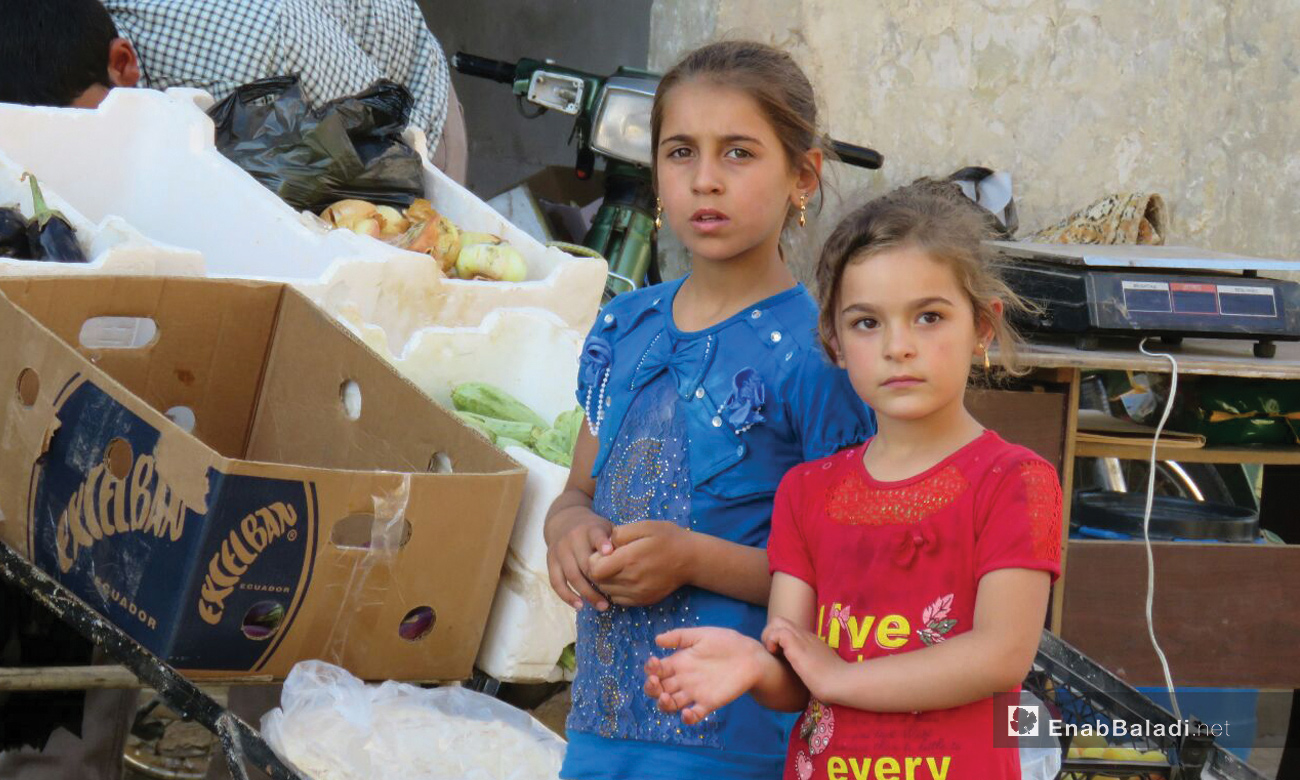
 Two girls infected with Leishmania in Kafr Zita, Hama Countryside - June 21, 2017 (Enab Baladi)
Two girls infected with Leishmania in Kafr Zita, Hama Countryside - June 21, 2017 (Enab Baladi)





 A
A
A
A
A
A

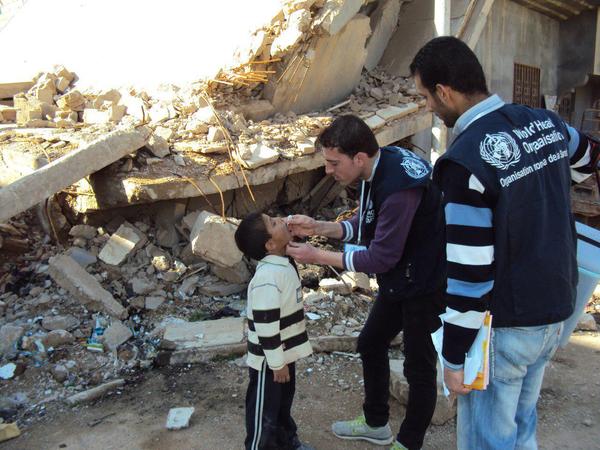
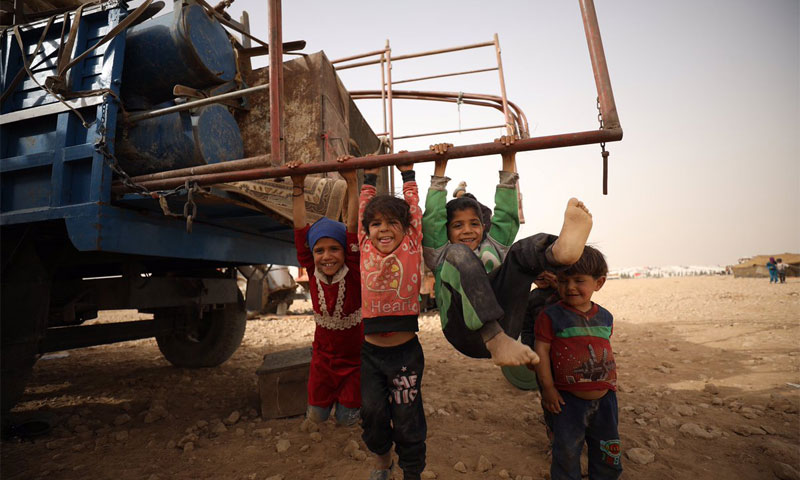
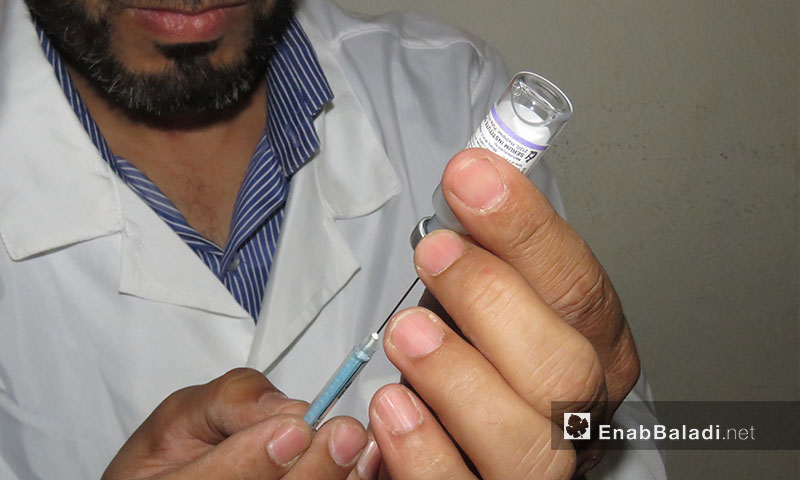
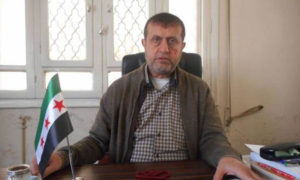






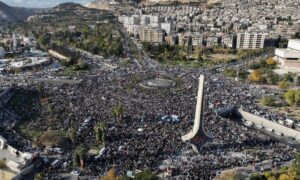
 More In-Depth
More In-Depth